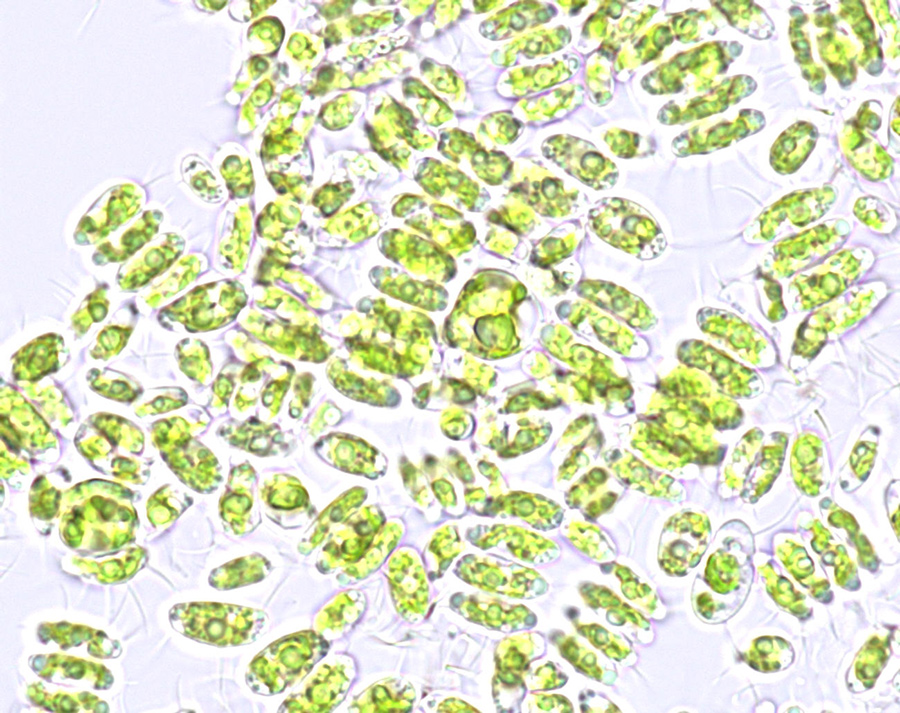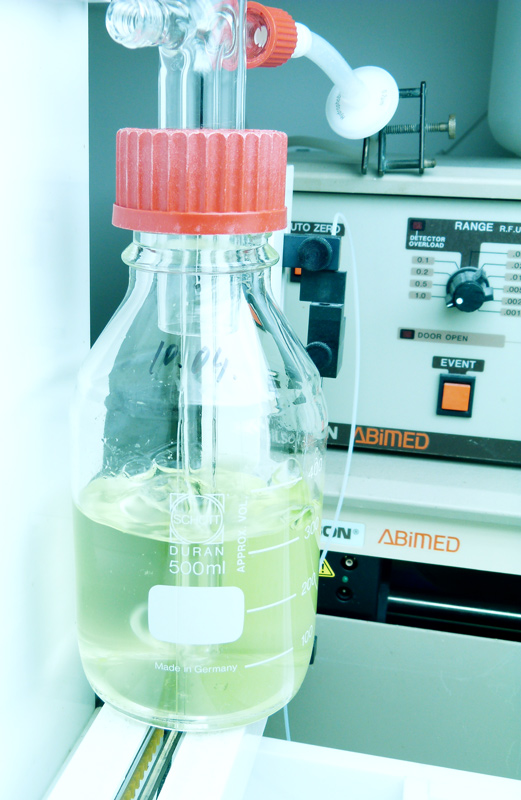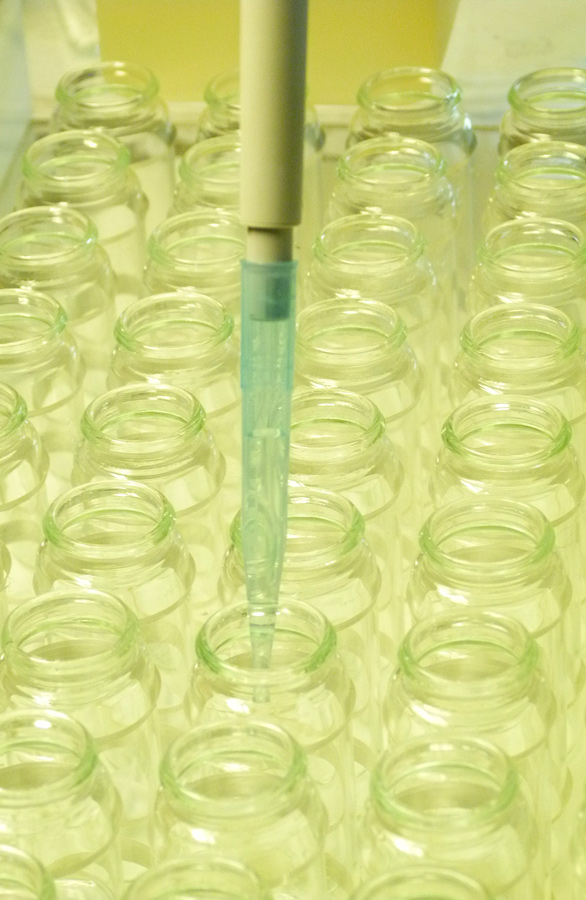The algae test in accordance with DIN 38412-L33 1989-03 is a standardized procedure in which the effect of wastewater on algae is recorded in dilution stages.
The test organisms used are unicellular green algae, e.g. Scenedesmus subspicatus, which live as planktonic organisms in stagnant or slow-flowing waters. The algae test aims to detect harmful effects that impair the process of primary production, which is so fundamental to life.

In the algae test, a defined number of algae are exposed to the test medium, to which inorganic nutrient salts are added, under defined lighting and temperature conditions. The fluorescence of the chlorophyll is measured at the beginning and end of the test. As the growth of the algae is proportional to the amount of green dye produced, the measured value is directly indicative of the biomass in the test batch.
After 72 hours of exposure of the test organisms, the dilution level at which an inhibition effect of biomass production of less than 20% can be measured is determined.
The test results of the algae test are used for substance evaluation within the framework of the Chemicals Act, the Plant Protection Act and the Water Resources Act (Directive 67/548/EEC Annex V; DIN 38412 (L33) 1991-03 and L9; OECD Guidelines for testing of chemicals, 201 “Alga, Growth Inhibition Test”).


